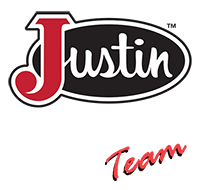Manual

Treatment for
Lumbosacral
&
Hip Dysfunction

Treatment For Lumbosacral & Hip Dysfunction
ILiopsoas
 ORIGIN: Lateral surface of the lumbar vertebrae(T12-L5)
ORIGIN: Lateral surface of the lumbar vertebrae(T12-L5)
INSERTION: Lesser trochanter of the femur
ACTION: Main hip flexor & assists in external rotation of the hip
 NERVE/MYOTOME: anterior rami off the lumbar plexus at the levels of L1-L3
NERVE/MYOTOME: anterior rami off the lumbar plexus at the levels of L1-L3
ARTERY: Lumbar branch of the iliolumbar artery

Treatment For Lumbosacral & Hip Dysfunction
Trigger Point

Hand Placement: Make sure to look at the patient for depth of tolerance. Hold pressure for 10-15 seconds,
repeat 3-5 times. Apply mild to moderate pressure.
Active Release


To release the psoas, apply pressure with hand/fingers and slowly flex and extend the hip. (do this by
having patient slide the foot on the table). Repeat 5-10 times and complete 2-3 sets. Apply mild
to moderate pressure.

Treatment For Lumbosacral & Hip Dysfunction
Manual Stretch

Place patient supine at the end of the treatment table. Place the extremely being stretched in hip extension.
Hold the satic stretch for 10-15 seconds and repeat 2-4 times (reps).

Treatment For Lumbosacral & Hip Dysfunction
Piriformis
 ORIGIN: Anterior surface of the sacrum
ORIGIN: Anterior surface of the sacrum
Insertion: Upper portion of the greater trochanter
Action: External rotation of the hip
 NERVE/MYOTOME: S1 & S2
NERVE/MYOTOME: S1 & S2
ARTERY: Inferior & Inferior & superior gluteal arteries.

Treatment For Lumbosacral & Hip Dysfunction
Trigger Point

Apply pressure with hand/fingers while hip is externally rotated and knee is flexed underneath opposite
leg. Hold for 10-15 seconds and repeat 3-5 times. Apply moderate to moderate + pressure
Active Release


To release the piriformis apply hand/finger pressure while internally and externally roating the hip.
Keep leg in adducted posistion Repeat 5-10 times and complete 2-3 sets. Apply mild to moderate pressure.

Treatment For Lumbosacral & Hip Dysfunction
Manual Stretch

Bend knee/hip to 90 degrees, flex hip to same side shoulder while externally rotating hip. Apply pressure
cephalad (toward the head) to opposite shoulder. Hold the stretch for 10-15 seconds and repeat 2-4
times (reps)

Treatment For Lumbosacral & Hip Dysfunction
Gluteus Minimus

ORIGIN: Posterior ilium under gluteus medius
INSERTION: Anterior surgace of the greater trochanter
ACTION: Assists the gluteus medius in abduction & medial rotation
NERVE/MYOTOME: Superior gluteal (L4, L5, S1)
ARTERY: Superior gluteal
Gluteus Medius

ORIGIN: Gluteal surface of the ilium under the gluteus maximus
INSERTION: Grater trochanter of the femur
ACTION: Abduction & medial rotation of the hip & thigh
NERVE/MYOTOME: Superior gluteal (L4, L5, S1)
ARTERY: Superior gluteal

Treatment For Lumbosacral & Hip Dysfunction
Trigger Point

Ensure the patient is side lying learning more towards a prone posistion than supine (leaning forward rather than back).
Apply mild to moderate pressure.
Active Release


To release the gluteus medius or minimus, apply hand/finger pressure and slowly abduct and adduct the
hip. Apply mild to moderate pressure. Repeat 5-10 (reps) and complete 2-3 sets.

Treatment For Lumbosacral & Hip Dysfunction
Manual Stretch

Internally rotate the hip of the side being stretched.
Hold for 10-15 seconds and repeat 2-4 times (reps).

The DonTigny Dynamic Core Stabilization Program
For Low Back and Pelvic Pain
Purpose: A program for the immediate relief and prevention of occurence of common low back pain, with special emphasis on the sacroiliac
joint.
For use by medical professionals to provide instruction for the home care of patients with low back and pelvic pain.
Assisted Correction Traction

Have patient flex and lift up head to increase activation of the abdominals. Traction force should be
at a 45-degree angle and enough traction force to elevate traction side buttock. Hold 5-10 seconds,
4-5 times.
Bent Knee Traction
If ankle is injured perform bent knee traction

Have patient flex and lift up head to increase activation of the abdominals. Traction force should be at 45 degree angle
and enough traction force to elevate side buttock. Hold 5-10 seconds, repeat 4-5 times.

The DonTigny Dynamic Core Stabilization Program
For Low Back and Pelvic Pain
EZ Fix Method
for Sacroiliac Dysfunction


Place forarm under knee with hand on top of opposite knee. Place the other hand on top of the foot, applying
enough pressure to keep the foot from rising. Apply traction by learning trunk backward. Traction
should be backward and upward 45 degrees. Hold 5-10 seconds, repeat 4-5 times.
